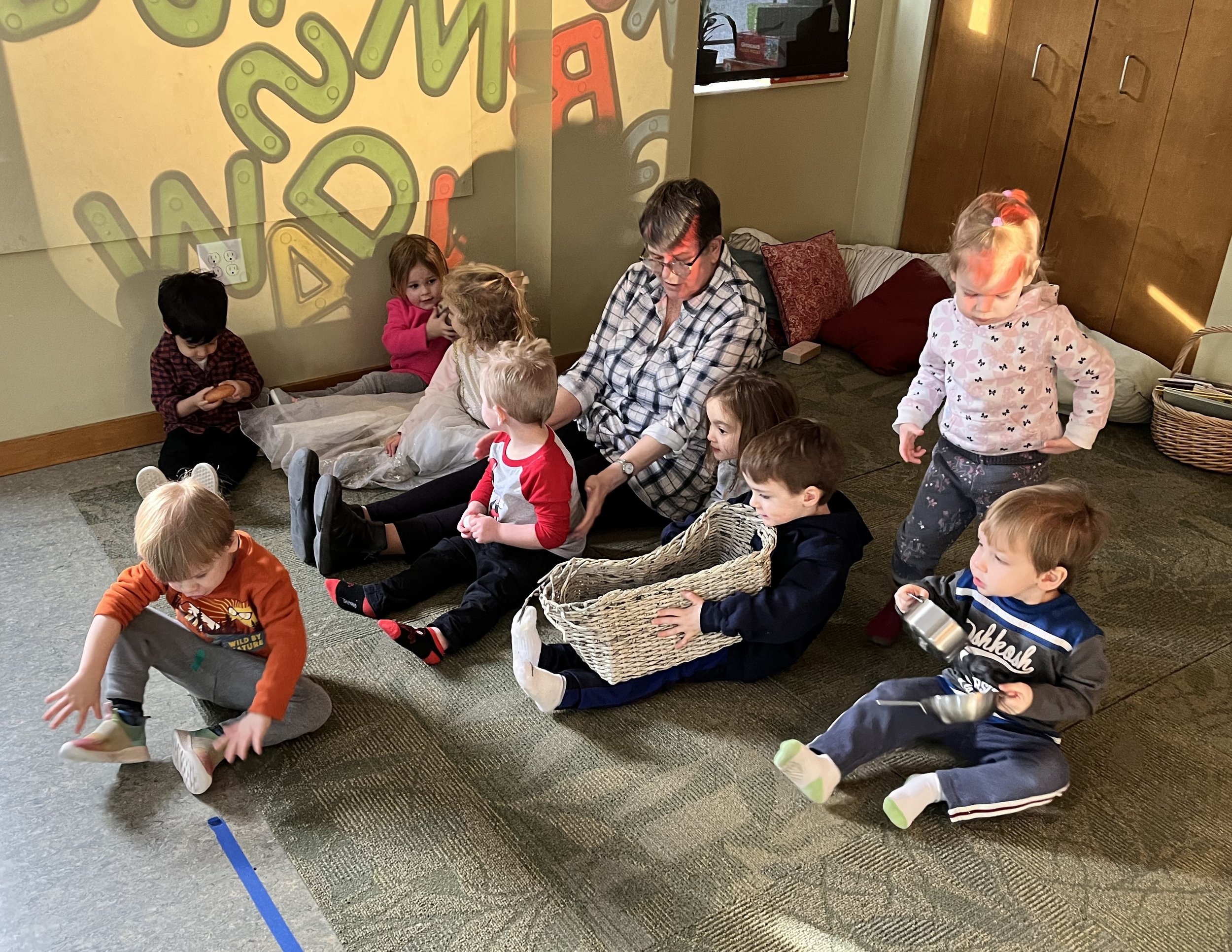“Do It Again!”
Transforming into kitties…again!
Perhaps this is a familiar scene at your house: It’s bedtime, and it’s time to snuggle up for a read-aloud before you tuck your child into bed. Perhaps, like at my house, you have a shelf full of varied and interesting books from which your child can choose. And perhaps, like at my house, your child chooses the same book every night. Do you ever wonder why, or even prompt your child to choose something different? Your child may resist such a prompt, and there’s a reason. Repetition is a common and crucial piece of early childhood development.
We see repetition every day at school. Groups of children return to the same play scenario over and over again. Every story a child dictates may feature a robot and snake, and soon the child who sits next to them is dictating stories about robots and snakes, too. A toddler may pour gravel down a ramp over and over again, not saying a word. Every day at lunch, preschoolers ask to play “the animal game,” a game during which a child gives a clue about an animal and the others at the table try to guess what it is. Even playing this game daily, some children give the same clues about the same animal every time it is their turn. The toddlers at Inver Glen frequently transform into kitties, and in this familiar role, they may feel more comfortable interacting with senior residents – even being petted or scratched behind the ears!
There is surely comfort in these repetitious routines for children, but the reason for repetition runs deeper than just familiarity. Children are born motivated to learn. A baby may repeatedly push food off her highchair having learned that doing so makes the dog come running. Children are constantly forming new neural pathways in their brains (more than one million every SECOND in the first three years of life!), and it is repetition that reinforces these connections.
On a recent morning in the toddler room, I observed this mechanism in action. Grandma Carol had come downstairs for her weekly visit, and a child suggested that they drive to “America of the Mall.” The group sat down on the carpet (imagining it was a “minivan”), pretended to buckle their seat belts, and were off to the mall. When they arrived at the mall (the loft), they promptly took the “escalator” to the second floor. When Grandma Carol ascended the imaginary escalator, she pretended to bump her head on the ceiling, saying, “I clunked my gourd!” The children howled with laughter, begging her to do it repeatedly. Then it was time to go back to the minivan, and the scenario repeated. This exact scenario, right down to the “gourd clunk,” was repeated over and over again for almost an hour, much to the enjoyment of everyone involved.
Off to the mall with Grandma Carol
As an adult, a teacher, a parent, we often may feel the temptation to interrupt or alter the way our children play, particularly when it becomes repetitive. We may feel bored or even concerned about our children’s development, but as with many things in child development, growth occurs behind the scenes. The wheels are turning, the connections are growing, and it can feel really good to let yourself sink into the repetitive and rich world of the young child.


